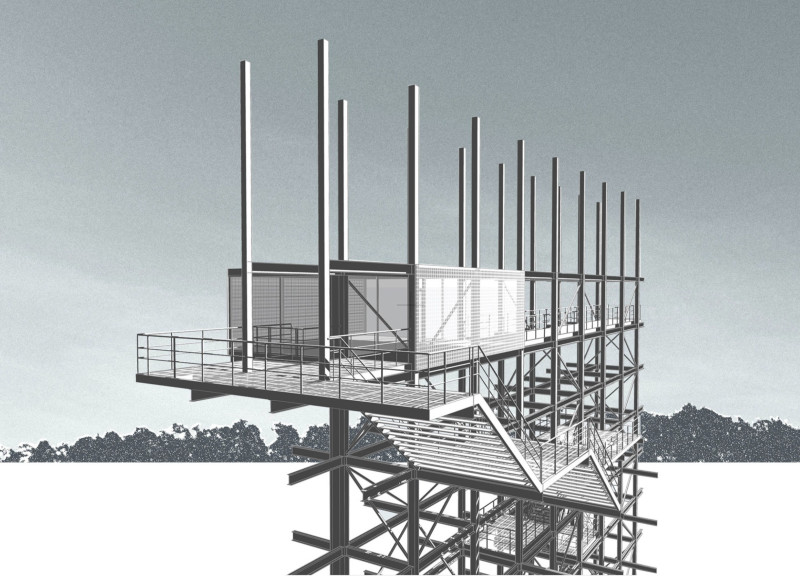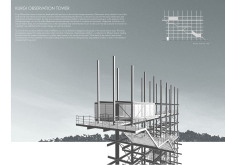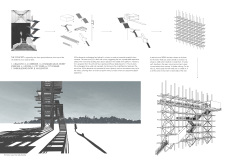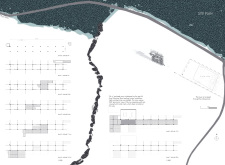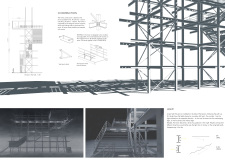5 key facts about this project
The Kurgi Observation Tower is situated in the North Vidzeme Biosphere Reserve in Latvia. The design focuses on raising awareness about climate change while providing a space for nature observation and recreation. By combining elements commonly found in urban environments with the natural landscape, the tower invites visitors to consider their relationship with both nature and the built environment.
Architectural Concept
The design embodies the idea of heterotopia, integrating various urban features within a natural context. It addresses the complexities of living in the Anthropocene, where the boundaries between urban life and nature often blur. Visitors can move through spaces that echo everyday urban settings while being surrounded by the beauty of the natural world, promoting a deeper understanding of environmental issues.
Spatial Layout
The layout encourages exploration and interaction. A dark, narrow entry leads into a series of spaces that gradually open up. These spaces include elements like balconies and corridors that are familiar in cities. This thoughtful arrangement allows visitors to progress from intimate, private areas to more open, communal environments, fostering a sense of connection among them while highlighting the contrast between built and natural spaces.
Structural Features
The framework of the tower is made of steel, which provides both strength and a clean aesthetic. This material choice contributes to the overall stability of the structure. The design includes broad city stairs that also serve as seating, allowing gatherings and discussions. Balconies, with their movable seating and integrated flower beds, further enhance the experience, encouraging occupants to engage with the surrounding nature.
Lighting Design
Carefully placed linear light fixtures along the beams are integral to the tower's experience. This lighting provides visibility and creates a welcoming atmosphere at night. As the lights illuminate the structure, they interact with the natural surroundings, emphasizing the tower’s role as a focal point. This thoughtful approach to lighting supports a deeper connection to the landscape while encouraging visitors to reflect on their environmental surroundings.


